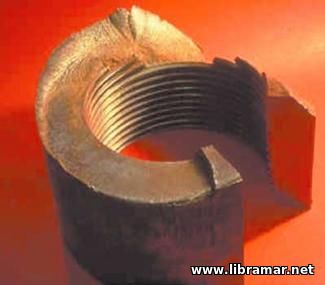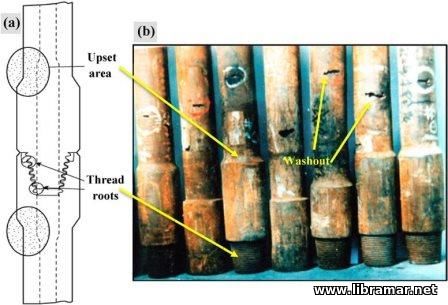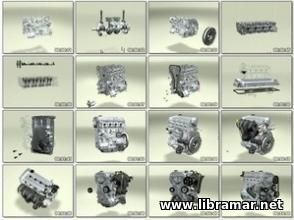Corrosion Fatigue of the Drill Pipes

Corrosion is the alteration and degradation of material caused by its environment. Corrosion fatigue, or metal failure due to a corrosive environment, is a common cause of drill stem failures. With water-based drilling fluid, the chief corrosive agents of drill pipe are dissolved gases, such as the oxygen, carbon dioxide, and hydrogen sulfide, as well as dissolved salts, and acids.
Most modern drill pipe is made with a thermally baked plastic coating applied to the inner surface to minimize corrosion pitting. Wirelines and tools in the drill string bore tend to rupture or destroy the plastic coating that protects the pipe.
Among the many factors affecting corrosion rates of drill pipe are the following:
pH – it is a scale for measuring the hydrogen ion concentration of a particular environment. The pH scale is logarithmic; that is, each pH increment of 1.0 represents a tenfold change in hydrogen ion concentration. The pH of pure water is 7.0. pH values below 7 are increasingly acidic, and pH values greater than 7 are increasingly alkaline.in the presence of dissolved oxygen, the corrosion rate of steel n water is relatively constant between pH 4.5 and 9.5. The corrosion rate increases rapidly at lower pH values and decreases slowly at higher pH values. In drilling, the pH level rarely falls below 7. Most problems occur at pH levels between 7 and 10.5.
Temperature – in general, corrosion rates increase with increasing temperature.
Velocity – in general, corrosion rates increase with higher rates of fluid flow through the pipe.
Heterogeneity – in general, the more uniform the grain structure of a pipe, the less will be the corrosive effect of the environment. Localized variation in the composition of microstructure of the metal – that is, corrosion in small, well-defined areas – may increase the corrosion rates.
High stresses – highly stressed areas may corrode faster than areas of lower stress. The highest bending stresses occur in doglegs, where the tension is highest.
doglegs, where the tension is highest.
Corrosion can take many forms and may combine with other destructive processes – erosion, abrasive wear, and notch failures – to cause severe damage. Several forms of corrosion may occur at the same time, but one type will usually predominate. The following forms of corrosion are most often encountered with drill pipe:
Uniform, or general attack – in this type of corrosion, the pipe corrodes evenly, usually leaving a coating a corrosion products, i.e. iron oxide, or rust;
Pitting, or localized, attack – in this type of corrosion, the pipe corrodes in small, well-defined areas, causing pits to form. These pits may vary in number, depth, and size; they may also be obscured by corrosion products. A drill stem inspection crew can detect pitting with magnetic inspection. Pits can serve as points of origin for fatigue cracks and lead to washouts. A washout is a place where a small opening has occurred in the pipe, usually as a result of a fatigue crack’s penetrating the pipe wall and allowing drilling fluid through it;
Corrosion fatigue – in a corrosive environment, no fatigue limit exists, since failure will ultimately occur from corrosion, even in the absence of cyclic stress. The cumulative effect of corrosion and cyclic stress is greater than the sum of the damage from each. The endurance limit, or fatigue threshold, will always be lower in a corrosive environment, even under mildly corrosive conditions that show little or no visible evidence of corrosion.
The "Read Later" function allows you to add material to this block with just one click. Just click on the icon and read the articles that interest you at any convenient time.


